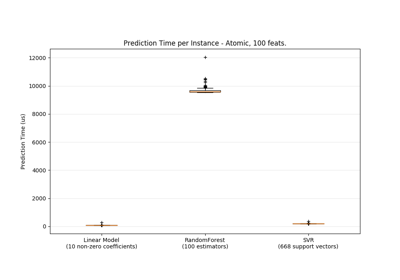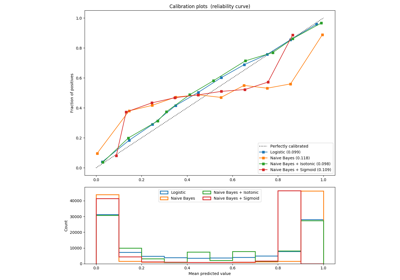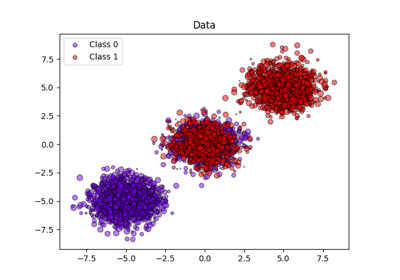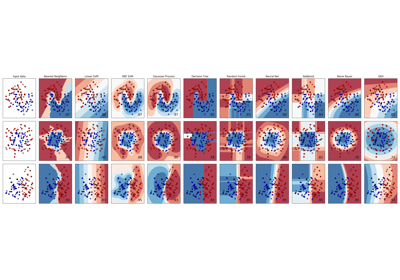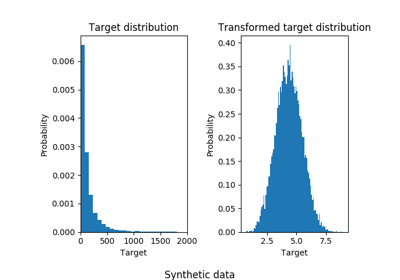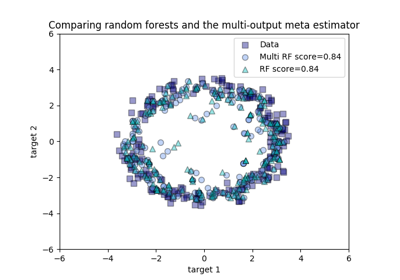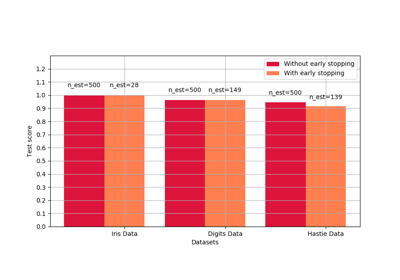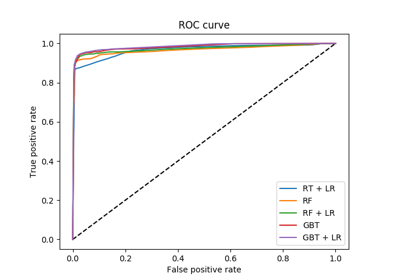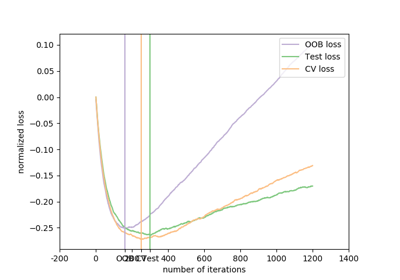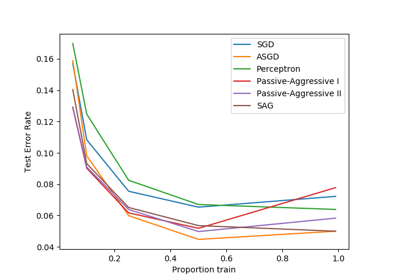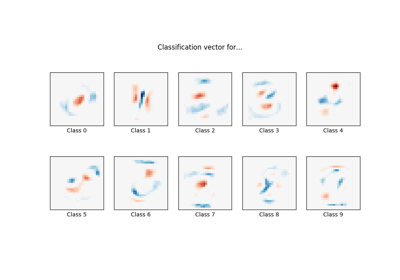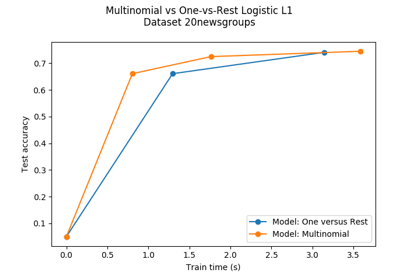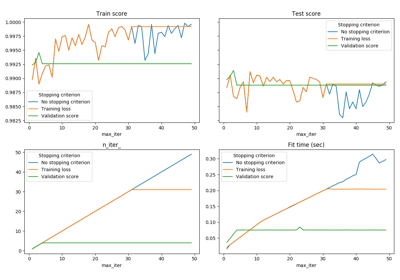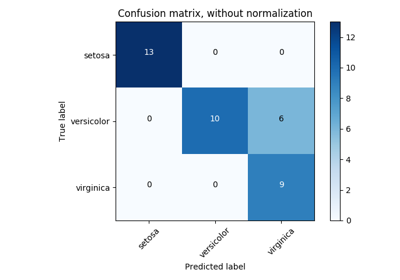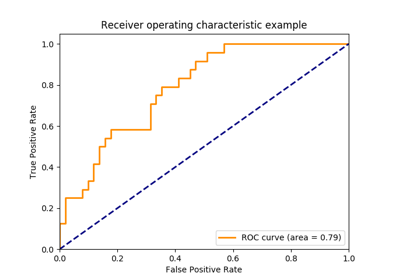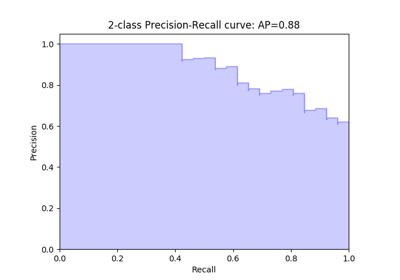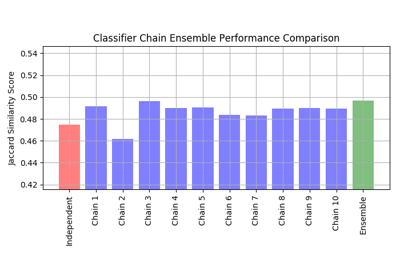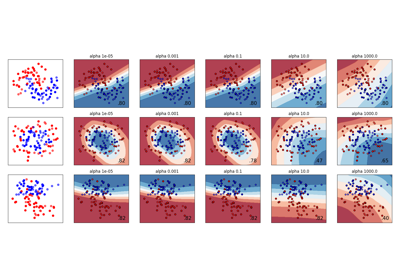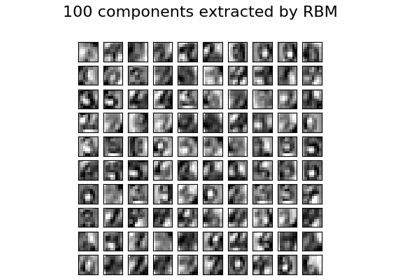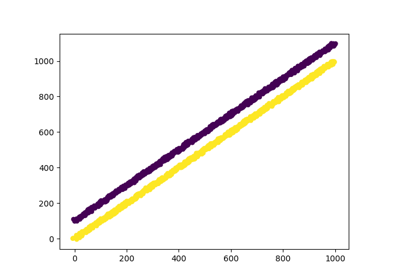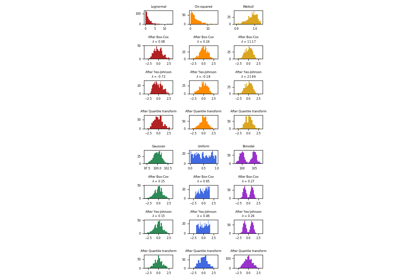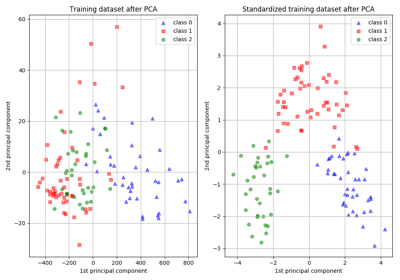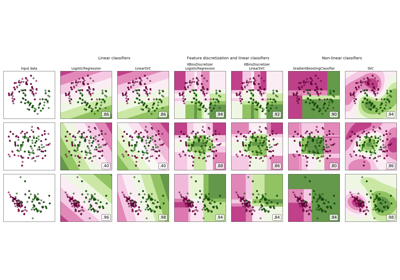sklearn.model_selection.train_test_split¶
-
sklearn.model_selection.train_test_split(*arrays, **options)[source]¶ Split arrays or matrices into random train and test subsets
Quick utility that wraps input validation and
next(ShuffleSplit().split(X, y))and application to input data into a single call for splitting (and optionally subsampling) data in a oneliner.Read more in the User Guide.
Parameters: - *arrays : sequence of indexables with same length / shape[0]
Allowed inputs are lists, numpy arrays, scipy-sparse matrices or pandas dataframes.
- test_size : float, int or None, optional (default=0.25)
If float, should be between 0.0 and 1.0 and represent the proportion of the dataset to include in the test split. If int, represents the absolute number of test samples. If None, the value is set to the complement of the train size. By default, the value is set to 0.25. The default will change in version 0.21. It will remain 0.25 only if
train_sizeis unspecified, otherwise it will complement the specifiedtrain_size.- train_size : float, int, or None, (default=None)
If float, should be between 0.0 and 1.0 and represent the proportion of the dataset to include in the train split. If int, represents the absolute number of train samples. If None, the value is automatically set to the complement of the test size.
- random_state : int, RandomState instance or None, optional (default=None)
If int, random_state is the seed used by the random number generator; If RandomState instance, random_state is the random number generator; If None, the random number generator is the RandomState instance used by np.random.
- shuffle : boolean, optional (default=True)
Whether or not to shuffle the data before splitting. If shuffle=False then stratify must be None.
- stratify : array-like or None (default=None)
If not None, data is split in a stratified fashion, using this as the class labels.
Returns: - splitting : list, length=2 * len(arrays)
List containing train-test split of inputs.
New in version 0.16: If the input is sparse, the output will be a
scipy.sparse.csr_matrix. Else, output type is the same as the input type.
Examples
>>> import numpy as np >>> from sklearn.model_selection import train_test_split >>> X, y = np.arange(10).reshape((5, 2)), range(5) >>> X array([[0, 1], [2, 3], [4, 5], [6, 7], [8, 9]]) >>> list(y) [0, 1, 2, 3, 4]
>>> X_train, X_test, y_train, y_test = train_test_split( ... X, y, test_size=0.33, random_state=42) ... >>> X_train array([[4, 5], [0, 1], [6, 7]]) >>> y_train [2, 0, 3] >>> X_test array([[2, 3], [8, 9]]) >>> y_test [1, 4]
>>> train_test_split(y, shuffle=False) [[0, 1, 2], [3, 4]]



